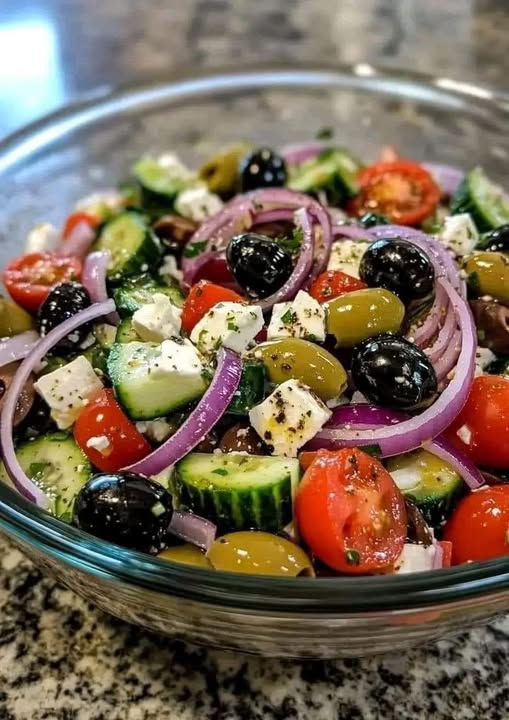Serving: Greek salad is a fantastic side dish to grilled meats, seafood, or a hearty pita bread. It can also be served on its own as a light lunch or dinner.
Storage: Greek salad is best served fresh, but it can be stored in the refrigerator for up to 1 day. The vegetables may release water, so it’s best to drain any excess liquid before serving again.
Variants:
Add Protein: Top with grilled chicken, lamb, or shrimp for a more substantial meal.
Vegan Option: Omit the feta cheese and replace it with a plant-based cheese or simply enjoy it without for a fresh vegan version.
Pasta Addition: For a more filling salad, add cooked pasta or quinoa for a heartier dish.
FAQ:
Q: Can I use a different type of cheese?
A: While feta is traditional, you can substitute with other cheeses like ricotta salata, goat cheese, or a mild mozzarella for a different twist.
Q: Can I make the salad ahead of time?
A: Yes, but it’s best to assemble the salad and add the dressing right before serving to prevent the vegetables from becoming soggy.
Q: Can I use green olives instead of Kalamata?
A: Absolutely! Green olives will provide a milder, slightly tangy flavor, but Kalamata olives are more traditional for this dish.
Classic Greek Salad is a fresh, healthy, and easy-to-make dish that brings together the best of Mediterranean flavors. Enjoy it as a side or a light meal—it’s the perfect addition to any occasion!



Yo Make również polubił
No-Bake Pumpkin Cheesecake: The Ultimate Fall Dessert – Creamy, Spiced, and Simply Delicious
Miracle Juice Recipe for a Healthier You!
Majonez z jajkami na twardo (bez surowego jajka!)
Pieczeń Mięsna w Chrupiącej Skórce – Przepis na Wyjątkowy Obiad